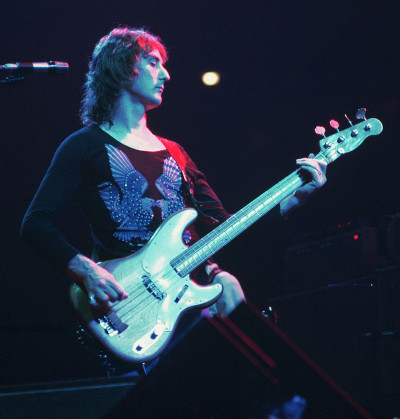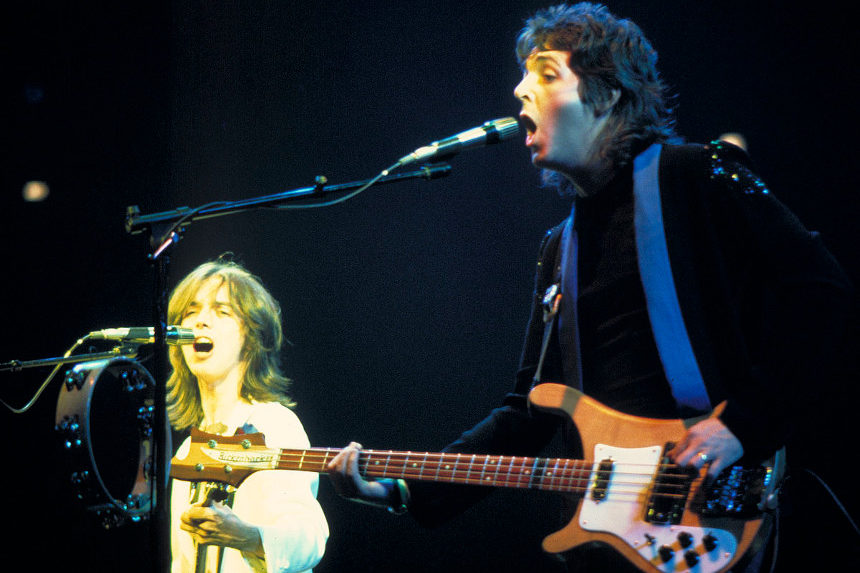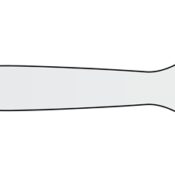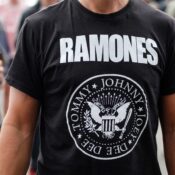The odds of achieving rock stardom equate to being struck by lightning or winning the lottery. Being in a beloved band and translating that into a strong solo career presents an even narrower margin for success. But being in more than one extremely popular group? That’s incredibly rarified air reserved for only a handful of huge stars. And perhaps the biggest of those stars pulled off precisely that beginning with the release of Wild Life 50 years ago this week. That star was Paul McCartney, and the band was Wings.
Even before the official break-up of The Beatles, the individual members of the Fab Four were making and releasing solo albums. McCartney, who officially exited the group on April 10, 1970 amid business acrimony, released McCartney on April 17, 1970 and Ram (credited to both himself and his wife, Linda) in May of 1971. The musician realized during the making of his first solo album that he preferred the group dynamic, and although he brought in other players for Ram, it wasn’t a true group piece. For his next project, he drafted Linda on keyboards, retained Ram drummer Denny Seiwell, and recruited old friend and one-time Moody Blues member Denny Laine for guitar. Paul stuck with the bass while also singing lead and occasionally playing guitar and piano. Wings was born. Over time, Laine and the McCartneys would be the only constant members, as other musicians moved in and out of the band.

The group hit the studio in July of 1971. McCartney had been writing in advance with Linda, and he wanted the actual recording to have a more spontaneous feel than many of the overproduced records of the era. In fact, McCartney had been angry about extra production that producer Phil Spector had added to the final Beatles record, Let It Be. McCartney wanted to emulate Bob Dylan’s studio approach of just laying down the song. The group initially convened in Scotland for rehearsals, then went to the Abbey Road Studios in London for recording; five of the new tunes for the album were recorded in one take each.
While the album went Top Ten in the U.S. and #11 in the U.K., critics didn’t have many kind things to say. Curiously, no singles were released from the album. Wings started putting out non-album singles very quickly in 1972. Their first proper single, “Give Ireland Back to the Irish,” was a response to the Bloody Sunday Massacre in January of 1972 that saw thirteen civil rights protestors killed by British troops in Northern Ireland. Though the BBC banned the song, it went to #16 on the U.K. charts and #21 in the U.S. The subsequent 1972 singles “Mary Had a Little Lamb” and the double A-side of “Hi Hi Hi” and “C Moon” were both hits; “Hi Hi Hi” reached #10 in the States.
The next album, 1973’s Red Rose Speedway, came credited as Paul McCartney and Wings. Both the album and the single “My Love” went #1 in the U.S. That set a trend that would see every subsequent Wings single perform better in the U.S. than McCartney’s native England; the only exception in the following decade was 1977’s “Mull of Kintyre,” a #1 hit in the U.K. that didn’t chart in the U.S., likely because the ode to the Scottish peninsula wasn’t that relatable to the American audience.
“Live and Let Die” by Paul McCartney and Wings (Uploaded to YouTube by RetroMind1)
Wings’s ascent was secured shortly after the release of Speedway with “Live and Let Die.” The title song to the 1973 James Bond installment, it was the first rock song used in the series. It was also a reunion between McCartney and long-time Beatles producer George Martin. A hit around the world, the song sold one million copies in the U.S. alone while earning Grammy and Oscar nominations. Striking while the iron was hot, the seemingly indefatigable McCartney led the group back into the studio that summer and fall to make an indisputable classic. December 1973 saw the release of Band on the Run.
“Band on the Run” by Paul McCartney and Wings (Uploaded to YouTube by Paul McCartney)
Band on the Run wasn’t an immediate smash, but its momentum grew through the next 12 months, making it the U.K.’s best-selling album in 1974. It hit #1 in the States and eventually sold three million copies here. The strongest drivers of the record were singles “Jet” and the #1 title track. “Band on the Run” was inspired in part by a stray remark that George Harrison once made during a Beatles business meeting, bemoaning “if we ever get out of here.” McCartney paired that sentiment with broader themes of escape (which were also inspired by the ouster of former Beatles business manager Allen Klein). McCartney turned his ideas into a three phase song with distinctive melodies and changes. The song earned a Grammy and has been widely praised as one of McCartney’s best post-Beatles efforts; even John Lennon called both the song and the album “great.”
Between 1975 and 1980, Wings flew onward, releasing four more albums. Each topped over a million copies sold in the U.S. with Venus and Mars and Wings at the Speed of Sound reaching #1 and London Town and Back to the Egg cracking the Top Ten. All told, the band placed 23 songs in the U.S. Top 40 and sold in excess of 14 million records. Band on the Run landed in Rolling Stone’s list of the 500 Greatest Albums of All Time and was inducted into the Grammy Hall of Fame. However, by 1981, the relationship between Laine and the McCartneys had frayed. When McCartney was hesitant to tour following John Lennon’s murder in December of 1980, Laine decided to leave. Though a formal announcement wasn’t made at the time, Laine’s departure functionally ended Wings.
“My Brave Face” (Uploaded to YouTube by Paul McCartney)
However, much as the individual Beatles would work on one another’s solo projects from time to time, Laine appeared on two further McCartney albums in the 1980s. Throughout the rest of the decade, McCartney worked on a variety of projects, including collaborations with Stevie Wonder (“Ebony and Ivory”), Michael Jackson (“Say Say Say” and Thriller’s “The Girl Is Mine”), Ringo Starr (the film and soundtrack Give My Regards to Broad Street), and Elvis Costello (who co-wrote four songs on Flowers in the Dirt, including the hit “My Brave Face”). By 1989, McCartney had formed a new touring band (with Linda back on keyboards) and entered a new phase as a touring and recording artist under his own name. Linda passed away from cancer in 1998.
The Beatles: Get Back official trailer (Uploaded to YouTube by Walt Disney Studios)
Today, Denny Laine still tours and plays with the Denny Laine Band; his last proper album was recorded in 2008. McCartney continues do what McCartney does: record and tour. His most recent solo album, McCartney III, was released in December of 2020. He appeared at the 2021 Rock and Roll Hall of Fame Induction Ceremony to induct his friends Foo Fighters, and joined them onstage for a run through The Beatles tune “Get Back.” The ceremony also saw the late Billy Preston, who played on that song with the Beatles, inducted for Musical Excellence. Appropriately enough, The Beatles: Get Back, a three-part documentary by Peter Jackson reworked from unused footage of the Let It Be sessions and subsequent rooftop concert, which included Preston, debuted on Disney+ on November 25.
Though it’s sometimes overlooked or underrated in the larger span of McCartney’s career, Wings was a significant band in the 1970s. A top-selling and touring act with a run of strong singles, the group produced a legitimately great piece of work with Band on the Run and left a legacy of popular songs like “Jet” and “Live and Let Die.” They managed to be a strong presence in a decade that saw enormous musical upheaval; during a hard rock heyday that also witnessed the rise of punk and disco, Wings soared.
Featured Image: Paul and Linda McCartney performing with Wings in 1976. (Photo by Jim Summaria; used by Creative Commons Attribution-Share Alike 3.0 Unported license via Wikimedia Commons).
Become a Saturday Evening Post member and enjoy unlimited access. Subscribe now




Comments
Thank you for doing this great feature on Paul McCartney and Wings; particularly this week/month with the overload of overload on The Beatles. The ‘Get Back’ movie, the endless softcover books, analysis paralysis on the break-up; blaming Yoko, blaming Linda, blah, blah, blah. Enough!!
It was a natural course of events after being “The Beatles” 24/7 for 8 years taking its toll that these 4 men had run THEIR course as ‘The Beatles’. It’s astounding they were together that many years (before breaking up) and had put out enough material for 10 lifetimes!
The reasons for the breakup is not some new ‘revelation’ in 2021 at all, even if made to seem that way. It’was 50+ years ago! Hopefully the ‘Get Back’ movie will get “so-called” Beatles fans to understand why it was necessary, and the next logical step. It was necessary for Lucy to divorce Desi to secure their future successes. This website wouldn’t exist today if the Post hadn’t reinvented itself around the same time John, Paul, George and Ringo did the same.
Wings was the next logical step for Paul, and he could do a lot more as he wanted and envisioned. Of course there were compromises and it wasn’t easy. But it was largely on his terms. It had a run about as long as the Beatles, then time came for another reinvention, and a new band.
I was fortunate enough to see Paul & Linda at Angel’s Stadium in 1993 for his then new album ‘Off the Ground’ and had a blast! Great new music, screen tributes to John that were amazing, “Live and Let Die” with a full-on fireworks show. Many Wings hits, some of Paul’s Beatles hits, though (understandably) still de-emphasized then.
If I get the chance to see Paul again, I’d definitely go. Ringo too, for sure. I’m looking forward to future installments on George, John and Ringo’s solo efforts. They too got the freedom to create music in the 70’s they couldn’t in the 60’s but was always there. They were finally in the right decade not to have to suppress creating new versions of the American rock of their youth in England they so loved, like Doo-wop and so much more.